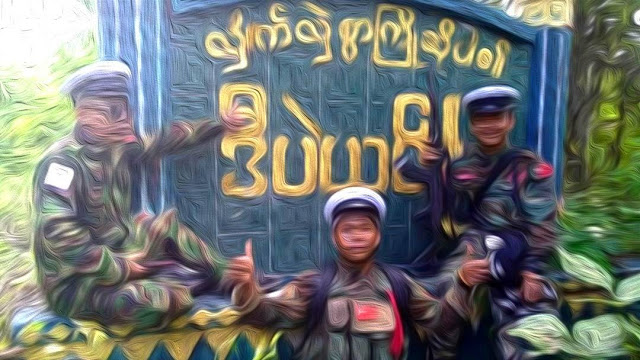Myanmar Spring Chronicle – August 19 Overview
(MoeMaKa) August 20, 2024
Dipeyin, Captured and Then Withdrawn Within a Day
Dipeyin, located in the Sagaing Region and infamous for the 2003 Dipeyin incident, was recently captured by a coalition of at least four armed groups fighting against the military council. These groups, based in Shwebo, Dipeyin, and Butalin townships, managed to take control of the city after approximately four days of intense fighting. However, according to reports, they had to withdraw from the city less than 24 hours after capturing it.
According to BBC Burmese, the forces involved in the capture included battalions from Shwebo District, the People’s Defense Forces (PDF) from Shwebo District, Dipeyin Township, and Butalin Township, as well as the 96 Soldiers PDF of the Central Plains. Other sources also reported the involvement of additional forces organized under names like Galon Army and Tiger Battalion, which are not officially recognized as township units.
In May 2003, the Dipeyin Township was the site of a premeditated attack orchestrated by some leaders of the Union Solidarity and Development Party (USDP) and military officers against a National League for Democracy (NLD) campaign led by Daw Aung San Suu Kyi. They secretly mobilized civilians to act as vigilantes in some villages within Dipeyin Township. Over two decades later, the township, like other areas in Sagaing, has become a stronghold of armed resistance against the military.
In 2003, during an NLD campaign tour, hundreds of local villagers, armed with sticks and knives, attacked the convoy as it passed through Dipeyin Township. Although they attempted to assassinate her, Daw Aung San Suu Kyi miraculously survived. Even after winning the 2015 election and assuming power in 2016, the NLD government did not prosecute those responsible for the 2003 incident. It was remembered merely as a political assassination attempt from the past.
Nearly a decade after the NLD came to power, Dipeyin Township has transformed into a stronghold of armed resistance against the military. The armed groups were able to drive out military council troops from the city and maintain control for nearly a day.
Although they captured the city, they could not maintain their hold due to a lack of anti-aircraft capabilities and insufficient ammunition. As a result, they had to withdraw after only a few hours.
During the battle for the city, residents had to abandon their homes and belongings, fleeing to avoid the fighting. Upon their return, many found their homes looted, and in some cases, family members were killed by artillery or airstrikes. These losses and the hardship of being displaced raise questions about how such sacrifices contribute to the goal of overthrowing the military dictatorship.
Zeya Lwin, a leader of the 96 Soldiers PDF, explained in an interview that the purpose of capturing the city was to militarily threaten the junta. However, he also acknowledged that the decision to launch such an attack without adequate ammunition and supplies should be reconsidered.
Some political analysts and critics believe that the armed groups should not have launched the attack without a plan to hold the city and sufficient ammunition. They argue that the toll on civilians, who suffer the consequences of such battles, must also be considered. Since most residents support the resistance, they have to endure the hardships of living in a conflict zone while trying to maintain their livelihoods as best as they can.

